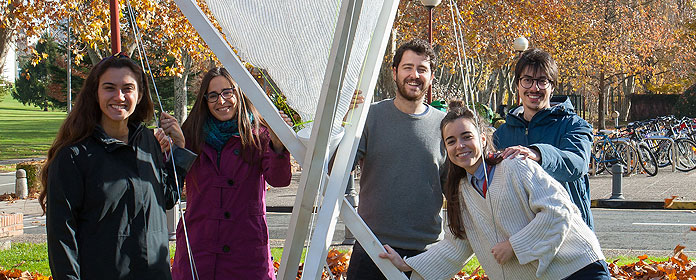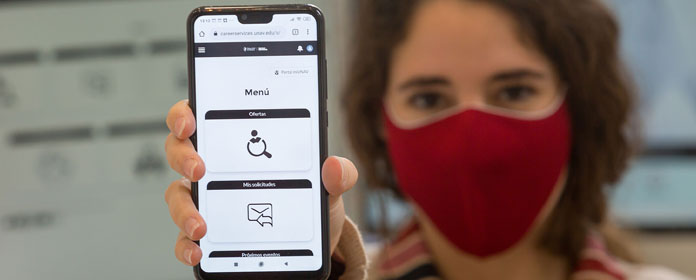A "fog catcher" for the Pamplona of Peru
University students and graduates will install a drinking water system for this suburb of Lima next summer.

A group group of students and recent graduates of the School of Architecture of the University of Navarra will install this summer a "fog catcher" in Pamplona, a neighborhood located in the city of Lima (Peru), which shares its name with the capital of Navarra.
It is a system for obtaining drinking water, which will be located in the high points of this suburb, allowing the supply of water to homes and public areas. The "fog catcher" condenses the humidity in the environment, taking advantage of the fact that one of the main characteristics of Lima is its abundant fog.
The project, called "Urban regeneration with sustainability criteria in informal settlements. Case study: Pamplona, Lima, Peru", began to be developed five years ago in the department of Urban Planning of the School of Architecture and its goal is to try to apply solutions of sustainable urban design in different areas worldwide.
The goal now is to take this internship to neighborhoods that originated informally and spontaneously, and, in this case specifically, to apply it to the Pamplona neighborhood that emerged in 2004 in the form of a settlement and is now legalized in the Peruvian capital. "Our proposal consists of regenerating this neighborhood by improving the lives of the inhabitants through sustainable urban design solutions," says Ángela Abascal, recent graduate and main author of project.
Traveling with her will be Carmen Bistuer, a fifth-year student who, together with Beatriz Almeida, began collaborating on project last year. "This past year we have integrated a new system for collecting data called GIS (Geographic Information System) that allows us to obtain more information than we had before," explains Beatriz.
He also states that "it is a neighborhood with many topographical problems, although the main obstacle is the physical and economic boundary that exists between the neighborhood and the Monterrico area, materialized with a fence that is called the 'wall of shame'".
Along with the drinking water system, the authors of project have proposed cleaning the streets of debris, introducing public transportation, improving connections with the city, incorporating a bicycle lane and giving the neighborhood a renewed image. In addition to the creation of macro-blocks that will help to organize traffic in the neighborhood, since right now, as it is an informal settlement, there is no such established order.
Tantaka Solidarity ProjectsThis project, which has been joined by students from other Schools, including several Peruvian students, has been the winner of the first Call for Solidarity Projects of Tantaka, the University's solidarity time bank, at partnership with School of Architecture. These awards, endowed with 3000 euros, help the authors to implement their projects in the conditions and status for which they were created. The project has counted on the partnership of Leroy Merlin and Arvena, who have supplied the necessary products for the elaboration of the first prototype.




